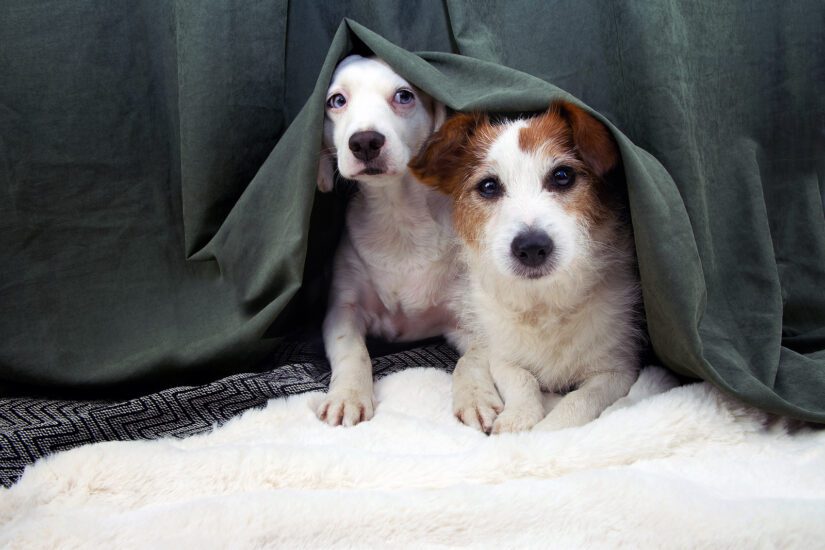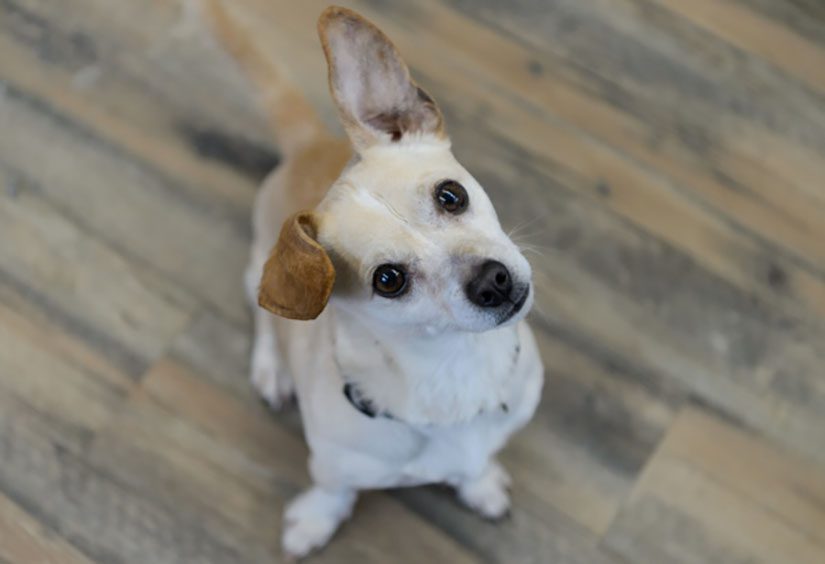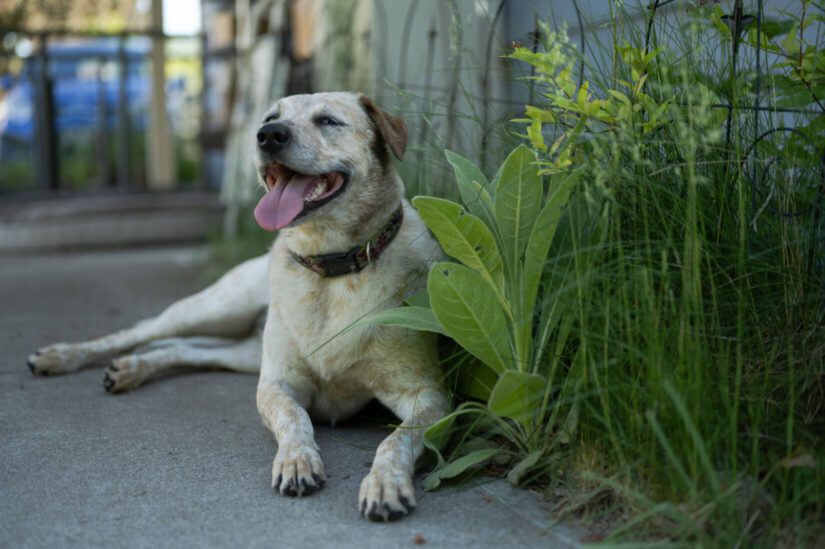There is no one happier to see you than your dog. They are the best companions; they help us stay active and social and we just feel better when they are around.
But beyond the ways they improve our quality of life, there are some amazing facts about dogs that will help us better understand and take care of our furry family members.
1. Storms can actually physically hurt dogs
When the wind starts to howl and thunder starts to rumble, your dog may become very anxious, looking for a place to hide. Storm phobia is very common in dogs, but your dog is not just affected mentally by storms, they are also affected physically. The sound frequencies produced during storms can actually be painful to your dogs’ ears and the static electricity that accumulates in their fur due to the change of pressure can also be unpleasant.

2. Eighteen muscles control a dog’s ears
A dog’s ears seem to be constantly on the move. A group of eighteen muscles control how they tilt and rotate to capture sounds effectively and to let us know how they are feeling. Dogs express a lot of their emotions in their ears. They play an important role in communicating with us and other dogs. For example, if a dog’s ears are flat back against their head, they may be scared and if they are pointing straight up they are on alert.

3. Dogs sweat glands are in their paws
One of the reasons it is so important to keep your dog cool on warm summer days is because of the way they sweat. When a human’s internal temperature starts rising, our hypothalamus tells eccrine sweat glands all over our body to start cooling down by producing sweat which then evaporates off our skin, reducing our temperature.
Dogs have far fewer sweat glands than people do and they are inefficient. Dogs’ merocrine sweat glands are located in their paw pads and produce a pheromone laden oily substance. It is rare, however, that a dog will sweat through its paws. Their primary form of body temperature regulation is panting. When a dog pants, heat rises up from the chest and escapes through the moisture of their tongue, mouth and throat. As the dog exhales during panting, the moist air evaporates and keeps them cool.

4. Their sense of smell is at least 40 times better than ours.
Depending on the breed, a dog’s sense of smell is up to 100,000 times more sensitive than ours. There are a couple of reasons their sense of smell is so much better
- Dog’s possess up to 300 million olfactory receptors in their noses, compared to about six million in humans.
- The percentage of a dog’s brain dedicated to detecting and analyzing smells is about 40 times larger than ours.
Interestingly, a dog’s skill at identifying smells are not limited to the physical. They can also use their sense of smell to identify human emotions like happiness and fear. Also, if you have ever wondered why dogs have wet noses, it is because of a special mucus that helps them absorb scent chemicals. Dogs lick their noses to help sample the scents which helps them understand what the smell is. Contrary to popular belief, how wet or dry a dog’s nose is, is not an indication of whether or not they are feeling sick.

5. Dogs have three eyelids
This may be news to many dog guardians, but your dog has three eyelids. The third lid is called the ‘haw’ or nictitating membrane and is found in birds, reptiles and some other mammals. The third lid serves four purposes:
- Helps prevent injuries to the cornea
- Keeps the cornea clean by removing debris or mucus
- Acts as a lymph node producing antibodies to fight off infection
- Produces one-third of a dog’s tears
Guardians will see their dog’s third eyelid when they are falling asleep or enjoying some petting, much like when a humans’ eyes roll back as they fall asleep or from pleasure. If there is a prolonged appearance of a dog’s third eyelid, it could mean injury or illness and may require veterinary care. Allergic conjunctivitis, poor physical health and cherry eye (prolapsed gland) are just a few of the reasons the third eyelid may be more noticeable.

